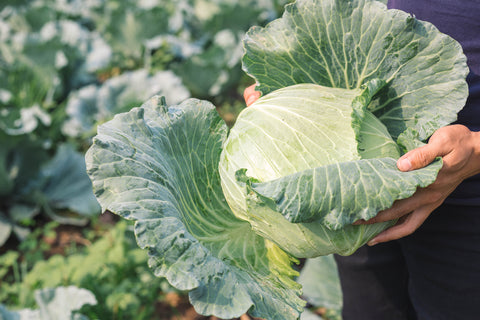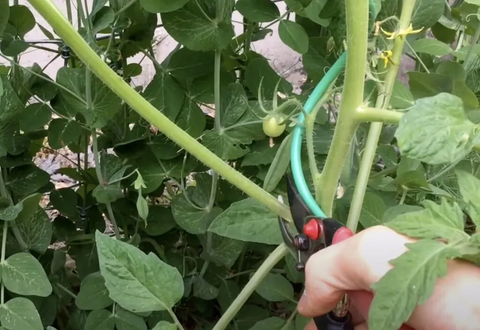In the realm of sustainable and efficient gardening, raised beds have become a popular choice for both novice and seasoned gardeners alike. These elevated plots offer numerous advantages, including improved drainage, better soil structure, and ease of maintenance. To maximize the productivity of your raised beds and foster a thriving garden ecosystem, employing effective crop rotation strategies is key. In this blog article, we'll delve into the principles of crop rotation, explore its benefits, and provide actionable strategies tailored specifically for raised beds.

The Importance of Crop Rotation
Crop rotation is a time-honored agricultural practice that involves changing the types of crops grown in a specific area over a sequence of seasons. The primary goal is to break the cycle of pests and diseases that target specific plant families while optimizing soil fertility. In raised beds, where space is often limited, strategic crop rotation becomes even more crucial for maintaining soil health and achieving bountiful harvests.
Benefits of Crop Rotation in Raised Beds
- Pest and Disease Management:
Rotating crops disrupts the life cycles of pests and pathogens, reducing the likelihood of infestations and diseases. Different crops attract different pests, and by rotating, you make it more challenging for these pests to establish themselves.
- Nutrient Balance and Soil Health:
Different crops have varying nutrient needs. Crop rotation helps maintain a balanced nutrient profile in the soil, preventing the depletion of specific nutrients. Legumes, for example, can fix nitrogen, benefiting subsequent crops with increased soil fertility.
- Weed Suppression:
Crop rotation can contribute to weed management. Some crops naturally suppress weeds through shading or allelopathy. By rotating crops with these weed-suppressing qualities, you can minimize weed growth in raised beds.
- Improved Soil Structure:
Each crop interacts with the soil in unique ways. Some plants have deep roots that break up compacted soil, while others contribute organic matter. A well-thought-out rotation enhances soil structure, promoting better drainage and aeration.
- Enhanced Biodiversity:
Diverse plantings attract a variety of beneficial insects that contribute to pollination and pest control. Crop rotation supports a healthy ecosystem within your raised beds, fostering biodiversity and resilience.

Effective Crop Rotation Strategies for Raised Beds
- Divide Your Raised Beds into Sections:
If you have multiple raised beds, consider dividing them into sections to facilitate a more systematic rotation plan. Assign each section to a specific crop family or category, allowing you to rotate crops within a designated space.
- Follow a Four-Year Crop Rotation Plan:
Divide your raised beds into four sections and follow a classic four-year crop rotation plan, where crops from the same family are grown in the same section every fourth year. This cycle helps break pest and disease cycles effectively.
- Year 1: Legumes (e.g., peas or beans)
- Year 2: Brassicas (e.g., broccoli or cabbage)
- Year 3: Solanaceae (e.g., tomatoes or peppers)
- Year 4: Root Crops (e.g., carrots or potatoes)
- Include Cover Crops:
Integrate cover crops into your rotation plan during fallow periods. Cover crops, such as clover or winter rye, contribute organic matter to the soil, prevent erosion, and suppress weeds. They also serve as green manure, enriching the soil with nutrients.
- Utilize Succession Planting:
Implement succession planting within each raised bed section to maximize productivity. Instead of waiting for an entire season to pass before planting a different crop, stagger your planting times to keep the beds consistently active.
- Consider Companion Planting:
Incorporate companion planting principles into your rotation strategy. Some plants have mutually beneficial relationships, such as repelling pests or enhancing each other's growth. For example, planting basil with tomatoes can help deter certain tomato pests.
- Rotate Root Depths:
Vary the root depths of your crops to enhance soil structure. Deep-rooted crops like carrots or parsnips can be followed by shallow-rooted crops like lettuce or radishes. This diversifies the soil profile and promotes better nutrient absorption.
- Implement a No-Solanaceae Year:
Solanaceae, including tomatoes, peppers, and eggplants, are susceptible to similar pests and diseases. Designate one year where you avoid planting any Solanaceae crops in a particular raised bed section, helping to break the cycle of soilborne issues.
- Monitor and Document:
Keep a gardening journal to record which crops were planted in each raised bed section and any observations regarding their performance. Monitoring pests, diseases, and overall plant health will help you make informed decisions for future rotations.
- Practice Clean-Up Between Seasons:
Thoroughly clean and remove plant debris from raised beds at the end of each growing season. This reduces the risk of overwintering pests and diseases that could affect the next set of crops.
- Rotate Soil Amendments:
If you regularly amend your soil with organic matter or fertilizers, consider rotating these amendments based on the needs of the upcoming crops. This ensures that each bed receives the specific nutrients required for optimal growth.

Challenges and Considerations
- Limited Space:
Raised beds, by their nature, offer limited space. This can make traditional crop rotation challenging. To address this, focus on other rotation principles, such as diversifying plant families and utilizing companion planting.
- Intensive Planting:
Raised beds often involve intensive planting to maximize space. Be mindful of the spacing and growth habits of crops to avoid overcrowding, which can lead to increased competition for resources and potential pest and disease issues.
- Soil Health Maintenance:
Regularly replenish raised bed soil with organic matter to maintain fertility. Compost, well-rotted manure, and other soil amendments can compensate for the intensive nature of gardening in raised beds.
- Adaptation Based on Results:
Pay attention to the performance of crops in each section. If you notice recurring issues or exceptional success with a particular rotation, be willing to adapt and refine your plan accordingly.
Conclusion
Crop rotation in raised beds is a dynamic and adaptable practice that can significantly contribute to the success of your garden. By strategically planning your rotations, diversifying plantings, and implementing complementary techniques, you can create a thriving ecosystem within each raised bed. The key lies in observing, experimenting, and fine-tuning your approach based on the unique conditions of your garden. As you cultivate your raised beds with care and precision, you'll not only reap the rewards of a bountiful harvest but also nurture the health and sustainability of your garden for seasons to come.









